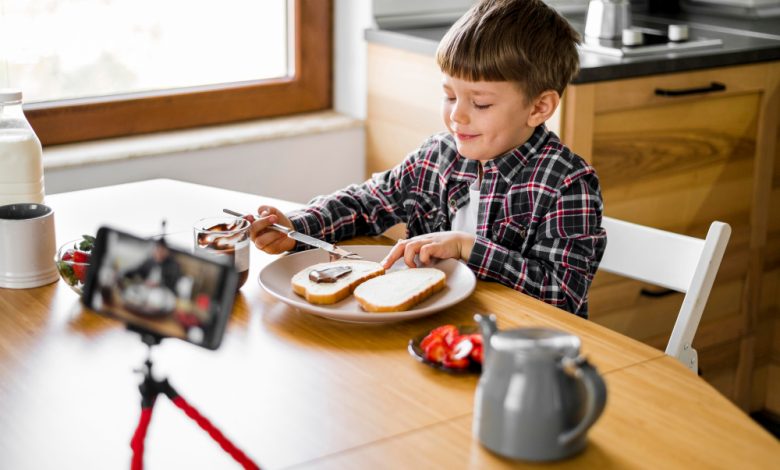Starting a Virtual Cooking Camp for Kids: A Guide

With the rise of online education and the convenience of remote learning, virtual cooking camps for kids are becoming increasingly popular. A virtual cooking camp is a fantastic way to teach kids valuable cooking skills, kitchen safety, and creativity, all from the comfort of their own homes. If you’re a culinary enthusiast or educator looking to start your own virtual cooking camp, this guide will walk you through the essential steps to make it a fun, successful, and profitable experience for kids and parents alike.
1. Define Your Camp’s Focus and Age Group
The first step in creating a virtual cooking camp is to define its focus and target age group. Knowing your audience will help you develop suitable recipes, choose age-appropriate activities, and tailor your teaching style.
Questions to Define Your Camp’s Focus:
- What age group will you cater to? Younger kids (ages 5–8) may need simpler tasks and more guidance, while older kids (ages 9–13) can handle more complex recipes.
- What type of cuisine or cooking skills will you teach? You could focus on global cuisine, healthy snacks, baking, or even specific skills like knife safety or basic cooking techniques.
- How long will the camp last? Decide if your camp will run for a week, several weekends, or one-off sessions.
Defining your focus and age group allows you to develop a curriculum that will engage kids and provide a safe, enjoyable cooking experience.
2. Plan Your Curriculum and Recipes
A well-structured curriculum is essential to keep kids interested and engaged throughout the camp. Plan lessons around easy, kid-friendly recipes and techniques that build their confidence and keep them engaged.
Creating an Engaging Curriculum:
- Choose Simple, Fun Recipes: Select recipes that are easy to follow and produce kid-approved results. Ideas include homemade pizzas, smoothies, fruit salads, muffins, or quesadillas.
- Incorporate Themed Days: Spice up the week with themes, like “Italian Day” for pasta making, “Baking Day” for cookies or cupcakes, or “Fiesta Day” for tacos and guacamole.
- Teach Basic Kitchen Skills: Include skills like measuring ingredients, mixing, kneading, and basic knife safety (using kid-safe knives if working with younger children).
- Focus on Health and Safety: Integrate lessons on food safety, hygiene, and nutrition to provide valuable life skills along with cooking techniques.
Offering a structured yet flexible curriculum helps kids learn progressively while keeping each session fun and rewarding.
3. Set Up Your Online Classroom
Selecting the right platform is essential for a smooth experience. Look for user-friendly, reliable video conferencing platforms with interactive features suitable for teaching kids.
Popular Platforms for Virtual Cooking Camps:
- Zoom: With features like screen sharing, breakout rooms, and spotlighting, Zoom is ideal for managing larger groups and keeping kids engaged.
- Google Meet: Google Meet offers a simple, accessible platform for smaller classes, and it’s free to use.
- Facebook or Instagram Live: These platforms are great for one-off sessions or promotional events, although they’re less interactive for group classes.
Before the camp starts, ensure you’re comfortable with the platform and practice screen-sharing recipes, muting/unmuting, and switching camera angles.
4. Create a Safe and Organized Home Setup
For a smooth and professional experience, create a tidy, safe cooking environment where kids can easily follow along.
Tips for a Professional Setup:
- Good Lighting: Bright, even lighting ensures kids can see every step. Natural light or softbox lights work well.
- Multiple Camera Angles: If possible, use a main camera for talking and a second overhead camera focused on the countertop for close-up shots of cooking steps.
- Tidy Background: Clear any unnecessary clutter and organize ingredients and tools before starting. A neat setup keeps the focus on the lesson and minimizes distractions.
A clean, organized setup will make your virtual camp more enjoyable for kids and more manageable for you.
5. Provide Parents with Pre-Class Resources
Parents will need to prepare certain ingredients, equipment, and a safe workspace for their kids. Sending resources ahead of time will help kids come to class ready and prevent delays.
What to Include in a Pre-Class Resource Pack:
- Shopping List: Provide a clear, organized list of ingredients needed for each session, including any suggested substitutions.
- Kitchen Tools List: Outline the tools needed for each recipe, such as mixing bowls, whisks, and baking trays.
- Preparation Instructions: Suggest any necessary pre-class preparations, like washing produce or measuring out ingredients.
- Safety Guidelines: Include reminders on safe knife handling, stovetop use, and general kitchen safety to help parents prepare a safe environment.
Organized pre-class resources help ensure each session runs smoothly and allows parents to set up a productive workspace for their kids.
6. Market Your Virtual Cooking Camp
To attract participants, you’ll need to promote your cooking camp effectively. Use a mix of online channels to reach parents interested in virtual activities for their children.
Effective Marketing Strategies:
- Social Media Marketing: Use platforms like Facebook, Instagram, and Pinterest to showcase camp highlights, share sneak peeks, and post testimonials from previous sessions.
- Collaborate with Parent Influencers: Partner with influencers or bloggers who cater to parents. They can promote your camp to a larger audience and build trust with their followers.
- Offer Early Bird Discounts: Encourage parents to sign up early by offering a discount for early registration. Limited-time offers create urgency and help you gauge interest.
- Use Parent and Community Groups: Post about your camp in local parenting groups, school forums, and community websites to reach parents who may be interested in an online activity for their children.
Creating a promotional plan will help generate interest, attract attendees, and increase enrollment for your camp.
7. Engage Kids During the Workshop
Keeping kids engaged online can be challenging, so use interactive techniques to make each session lively, fun, and memorable.
Engagement Tips for Virtual Cooking Classes:
- Encourage Participation: Ask kids to show their progress, taste-test their creations, and give feedback on flavors. Participation keeps them involved and interested.
- Add Games and Challenges: Make each session fun with small challenges, like decorating cookies or plating a dish creatively. Consider awarding fun virtual badges or certificates.
- Provide Real-Time Feedback: Offer encouraging, positive feedback to help kids feel proud of their creations and encourage them to try new techniques.
Creating a fun, interactive environment helps keep kids focused, making each session a positive experience they’ll look forward to.
8. Follow Up with Parents and Participants
Following up with parents and participants after the camp is a great way to build a loyal community and gain valuable feedback for future camps.
Post-Camp Follow-Up Ideas:
- Send Thank-You Notes: Show appreciation with a thank-you email and let parents know you’re available for any further questions.
- Collect Feedback: Ask parents and kids to share their thoughts on what they enjoyed and areas for improvement. Use this feedback to refine future camps.
- Offer Discounts for Future Camps: Encourage repeat participation by offering a discount for future workshops or classes. Repeat attendees help build a loyal community.
Following up shows professionalism, increases customer satisfaction, and can help grow your virtual cooking camp into a thriving business.
Conclusion
Starting a virtual cooking camp for kids is a rewarding way to share your love of cooking, educate young learners, and connect with a wider audience. By defining your camp’s focus, organizing a well-planned curriculum, and creating a safe, engaging environment, you can provide a memorable and educational experience that kids and parents alike will appreciate. With effective marketing, a professional setup, and attention to engagement, you’ll be well on your way to running a successful virtual cooking camp that teaches valuable skills and inspires a new generation of young chefs.





